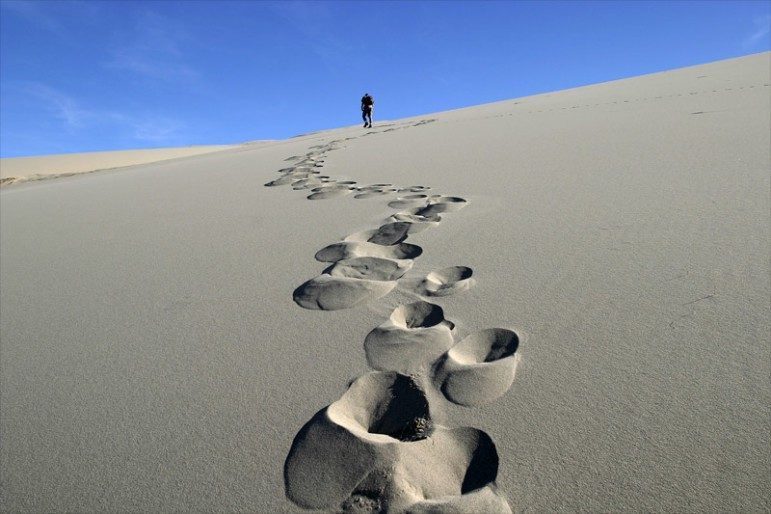By Doha News Team
Qatar continues to have one of the world’s heaviest ecological footprints per capita, a new report has found.
Despite efforts by authorities to encourage residents to be more energy efficient, Qatar is the second largest consumer of resources relative to its population, states Data World.
The conclusion is in line with results in other reports in recent years.
That includes the World Wildlife Fund’s Living Planet Report 2014, which also ranked Qatar second globally for its large use of resources compared to its production.
The new study is based on the latest statistics from research group Global Footprint Network. It draws on country data from 1961 to 2013 to come up with an annual National Footprint Account.
Globally, people generally used more resources than nature can replace this year, the study said.
Heaviest users
When measured in absolute terms, the world’s most populous and largest countries used the most resources.
The unit of global hectares used in the study refers to the average amount of resources one hectare of land produces.
The larger the footprint, the more land a country needs to offset its resource consumption and to account for its waste.
In terms of heaviest resource users, China was first with over 5 billion global hectares. The US was second with 2.7 billion, and India came in third with 1.3 billion.
Big footprint
Relative to such large nations, Qatar’s small size and population mean it has a tiny environmental impact on the world.
However, when countries were ranked according to their population, Qatar came in second globally, at 12.57 global hectares per person.
Luxembourg was first, with just over 13 global hectares, while the US was ranked 6th (8.6). Meanwhile, fellow GCC state Kuwait came in seventh with 8.2 global hectares per person.
At the other end of the table, Eritrea was found to have the lightest ecological footprint, at just over half a global hectare per person.
This means it would take nearly 25 Eritreans to match one Qatar resident’s footprint.
Eco debt
The study also examined countries’ environmental “credits” and “debits,” comparing how much they took from the planet compared to the amount to put back in.
Qatar again was among world’s top eco-debtors.
The “top” 10 also included Kuwait (third) and Bahrain (sixth). Saudi Arabia came in 13th place, while Oman was 20th. The UAE does not feature in the study.
In contrast, the world’s biggest environmental creditors were the South American countries of French Guiana and Suriname, who have high biocapacity and gave back more to the environment than they consumed.
Energy-producing countries fared high up the list of debtors.
As the country with the world’s third-largest natural gas reserves and little in the way of natural forest or farmland to offset this, Qatar’s position is unlikely to surprise many people.
Affluence
Qatar is not the only affluent country to be spending more than it makes.
In fact, the report found a clear correlation between high levels of GDP and large eco-footprints.
“Countries that use the most resources typically have the highest GDP, while countries with low GDPs generally use the least resources. The correlation between the two is strong and positive — footprint increases as GDP increases,” it said.
The report added that larger economies tend to consume more than they produce.
“As countries look to grow, the trend of environmental destruction will likely continue unless these countries take action to change course,” it said.
Looking forward
Local officials are well aware of Qatar’s heavy consumption of natural resources, along with its lack of fresh water and homegrown food.
They have made energy efficiency and sustainability cornerstones of the 2030 National Vision.
And authorities are also trying to shore up food security by encouraging more farmers to expand their local production.
Additionally, last year, Qatar signed onto the Paris Agreement, the first universal action plan to tackle global warming. The plan was in the news this week after the US announced it would be pulling its commitment.
These actions signal that change could be afoot.
A Sustainable Cities Index published last year found that Qatar was one of the least environmentally sustainable cities in the world due to its harsh climate, glut of fossil fuels and high levels of energy consumption.
But it did note that Qatar has been making “tremendous progress.”
It added that if the country’s plans to invest more in renewable energy sources bear fruit, its score could improve in the coming years.
Thoughts?
